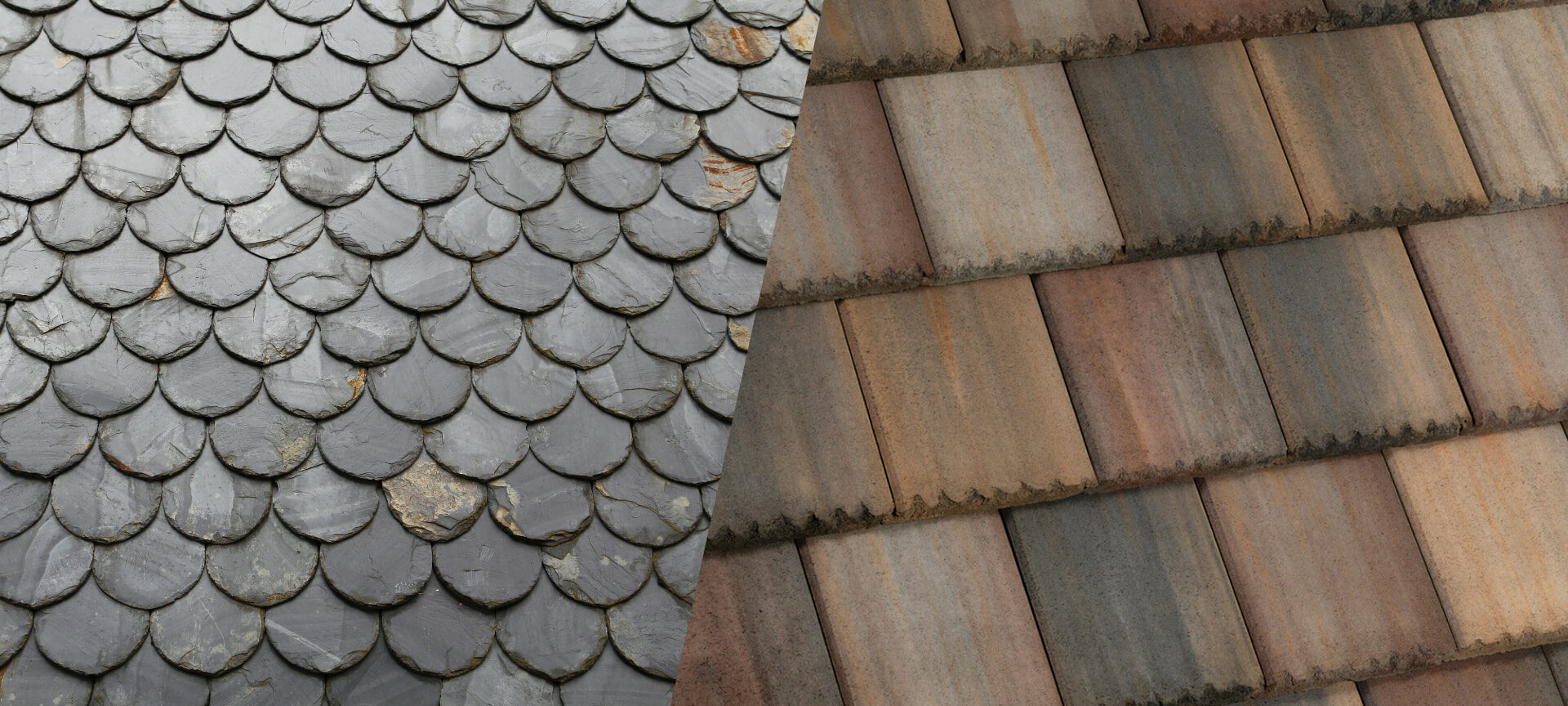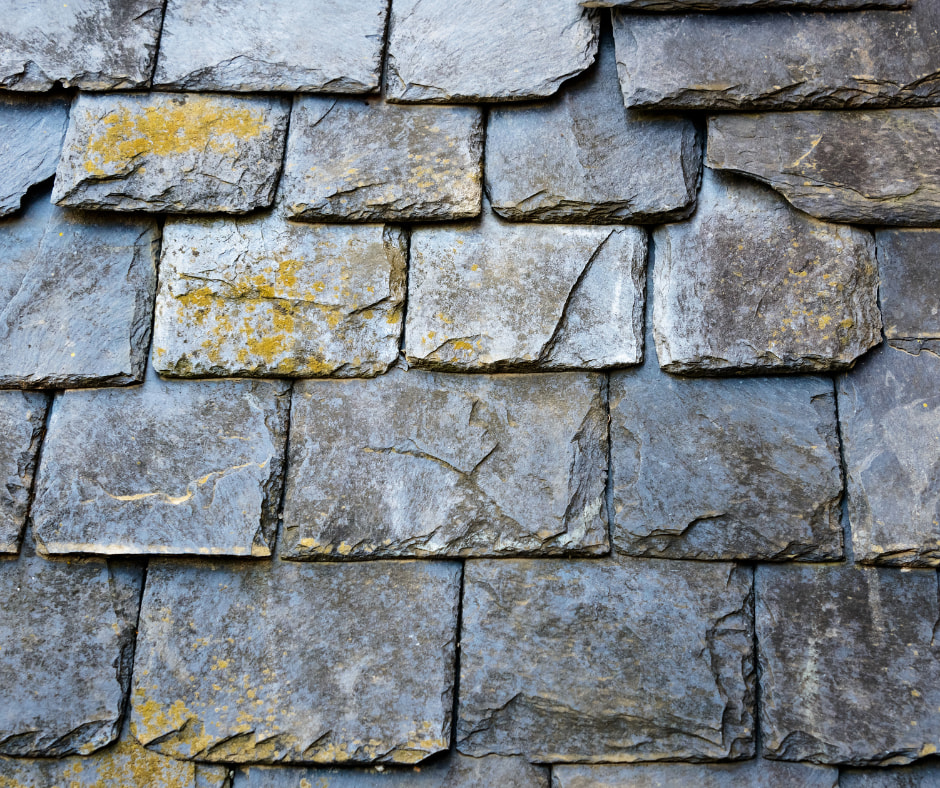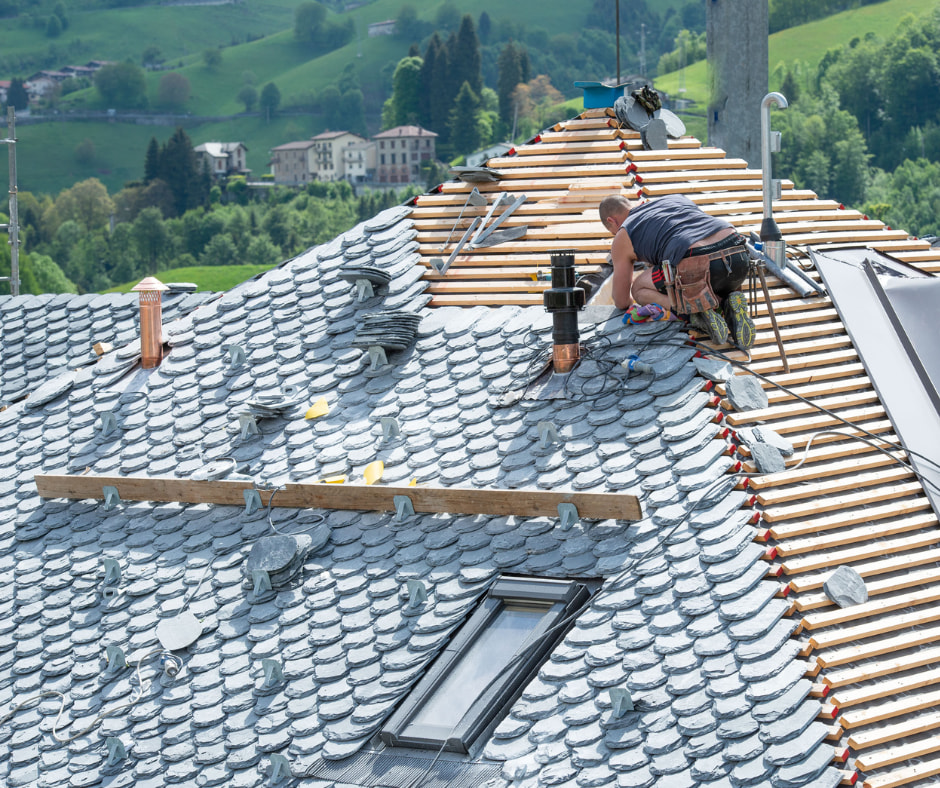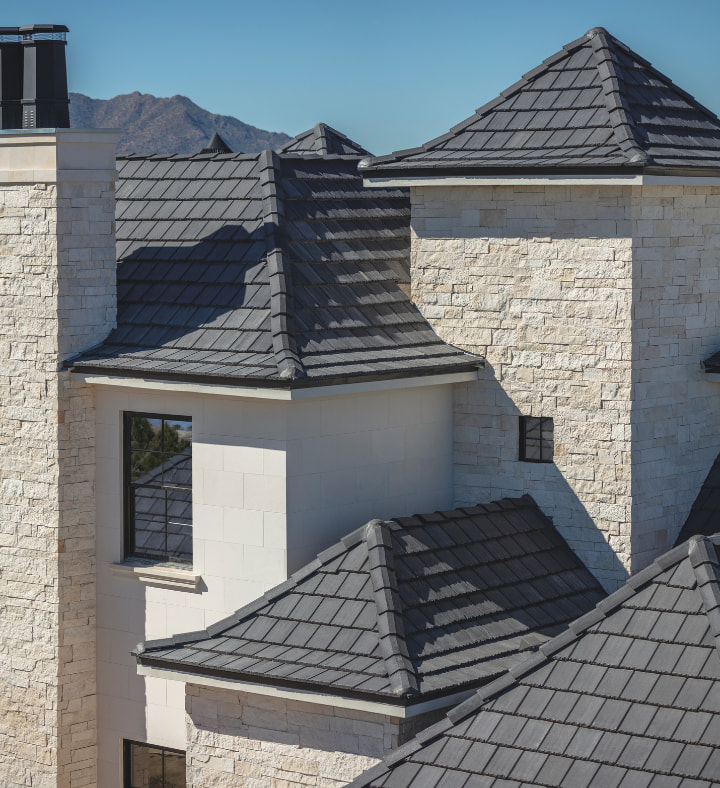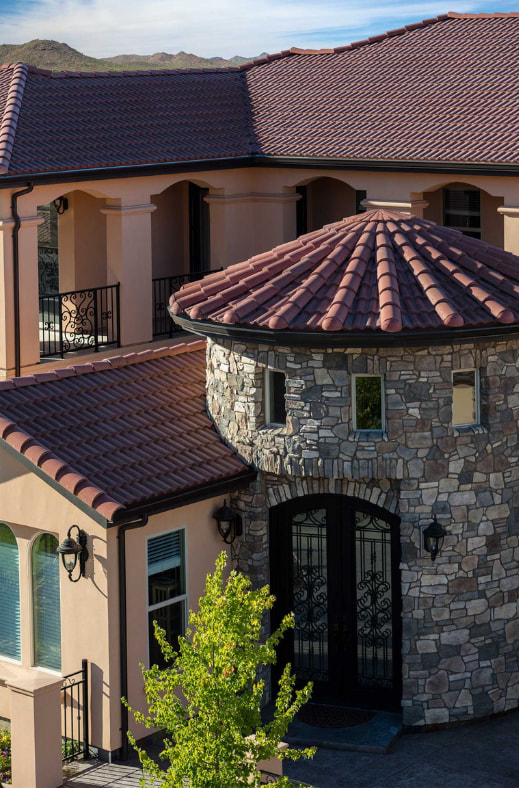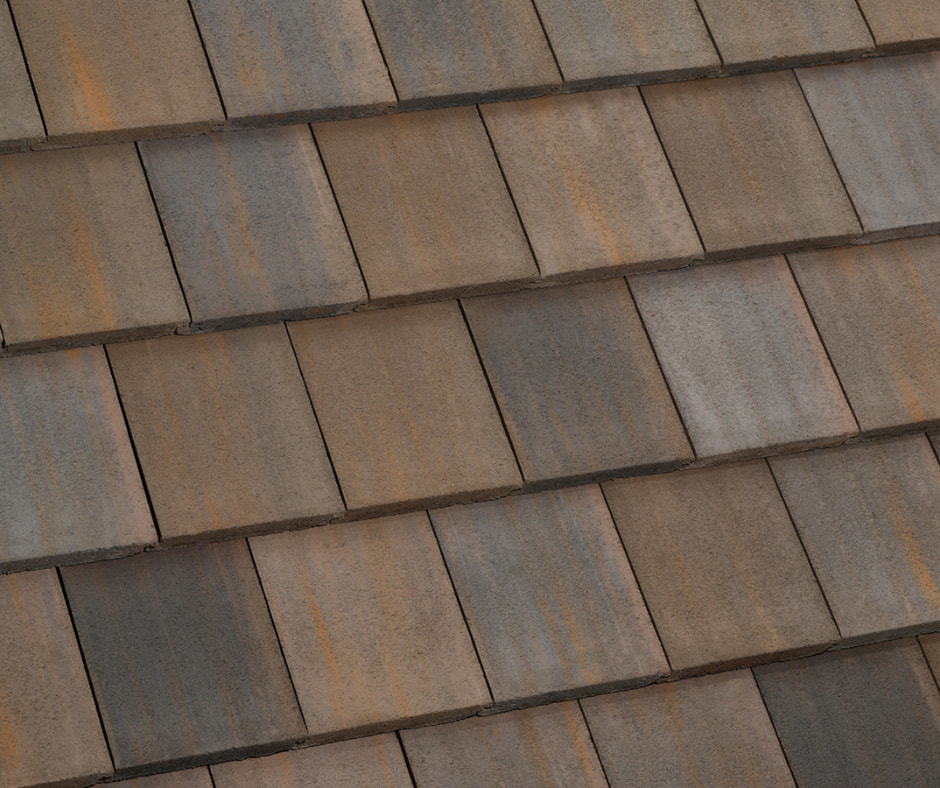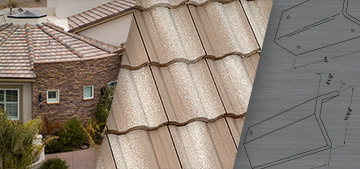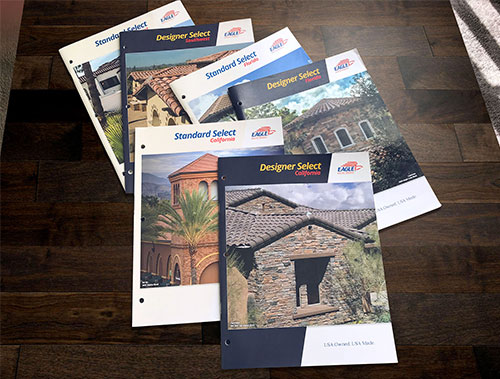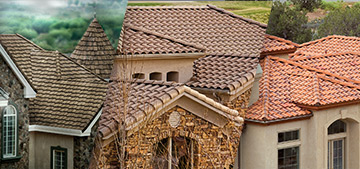Roofs protect buildings from natural hazards and extreme weather conditions. That is why the type of roofing material used is fundamental to avoid any type of vulnerability to your commercial or residential project. With so many options available in today’s market, selecting the right roof covering for your structure can be difficult. So why not begin the decision process by exploring the two roofing materials that have been around the longest? Let’s review the differences between slate and concrete roof tile.
Slate Roof Tile
Slate is a natural, fine-grained, metamorphic rock that is formed under intense heat and pressure underground. That rock is then split into smooth, flat pieces to form slate roof tiles.
Natural slate was used extensively in the Eastern U.S. throughout history and remains a popular choice for authentic renovation projects – especially on historical landmark buildings. Most hardscape flat profile roofing products attempt to emulate the look of slate in some manner, whether it be texture or color.
Benefits
If installed correctly, slate can serve as a watertight roofing system that lasts the life of the structure with minimal maintenance. The dense tiles can help regulate the temperature of your home and reduce energy costs. Natural slate tiles are also fire resistant and environmentally friendly. It is a natural and recyclable product, emitting zero toxic substances into the environment.
Disadvantages
As mentioned, natural slate tiles are extremely dense. They can weigh between 800 and 1,500 pounds per square (100 sq. ft.). This can pose a problem for homes that need a new roof, as typically they were not built to withstand this amount of weight. The expense of having a roof structurally inspected, and most likely reinforced, should be taken into account before having a slate roof installed. Another huge disadvantage is the high cost of slate itself, which may make it unattainable for many. Due to budget and weight constraints, emulates and alternatives have been produced, including synthetic slate. This product is lightweight and cheaper to install than natural slate; however, it is typically made of plastic and is relatively new to the market, so durability and longevity have not been proven.
Concrete Roof Tile
Concrete roof tile is the world’s most widely trusted roofing material dating back as early as 10,000 B.C. It has graced the roofs of homes, houses of worship, universities and commercial structures of the past and modern day. Made from a natural mixture of cement, sand, water and oxide, concrete roof tiles provide countless design possibilities as they are available in a variety of sizes, profiles and colors, making it easier for consumers to select the perfect tile to match any architectural style.
Benefits
When installed correctly, concrete roof tiles can withstand the harshest of weather conditions. In fact, most concrete roof tiles, such as those manufactured by Eagle Roofing Products, are noncombustible, severe weather tested and freeze-thaw tested.
Due to the installation method and the inherent properties of concrete, concrete tile roofs can help reduce energy costs by allowing air to circulate under and through the tile, reducing the heat transfer into the attic. If any tiles happen to chip or break, a replacement tile can be easily slid into its place. Due to how they are installed, individually – instead of in sheets or overlapped, along with the inherent thermal insulating properties of the raw materials, concrete tile roofs reduce energy costs by allowing air to circulate under and through the tile, reducing the heat transfer into the attic. In an effort to further enhance energy efficiency, concrete roof tiles are also available in highly reflective colors that meet various cool roof requirements for LEED and more.
Also, as touched on above, some concrete roof tile manufacturers have found innovative ways to give consumers more options by making their tile look like wood shake or slate. For example, Eagle’s Copper Series emulates the look of natural slate with its range of earthy tones and hints of warm orange.
Disadvantages
Like natural slate roofing, concrete tiles are heavy, which means if you need a new roof, you may need to have your building structurally inspected prior to installation. However, concrete tiles are lighter in weight and less costly to install than natural slate tiles. In addition, under certain environmental circumstances, concrete roof tiles can become algae prone. Although this does not affect the tile’s durability or energy efficiency qualities in any way, aesthetically, a homeowner may need to hire a professional to pressure wash the roof tiles periodically.
Deciding between two superior roofing products that last a lifetime can be difficult, but now that we’ve compared slate tile to concrete roof tile, you should be able to identify which of the two will work best for your next project.
To learn more about Eagle Roofing Products’ concrete roof tile, contact your local Eagle Account Representative, or if you’re interested in learning more about how concrete roof tiles compare to other roofing materials, visit our Why Tile? webpage.
